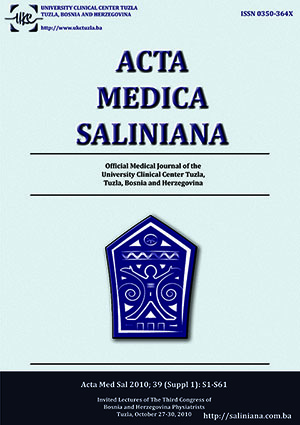
New Consesus on Botulinum Toxin Application in Treatment of Cerebral Palsy
Abstract
Cerebral palsy (CP) is a most common cause of spastic movement disorders with children. One of methods of treating spasticity is application of Botulinum toxin (BoNT). BoNT therapy has widely been used for 20 years now during which time it has proven to be a safe treatment. Botulinum toxin is natural purified protein and the strongest biological toxin – neurotoxin. Its medicinal application in USA dated back to year 1981 and in Europe – 1992. Botulinum toxin blocks neuromuscular conductance, i.e. it blocks transmission of acetyl-holin and in neuro muscular presynaptic – this is so called temporary (reversible) local chemodenervation. It does not influence synthesis of acetyl-holin. During 2-6 months neural collaterals are formed so that neuromuscular conductance is reestablished and spasm develops again. Botulinum toxin therapy can become inefficient due to three reasons. First is improper application of the toxin itself, second reason is predominant muscular fibrosis and third is presence of antibodies. Interdisciplinary European group of clinical experts in field of movement disorders and experienced users of Botulinum toxin (BoNT), updated its Consensus on Botulinum toxin application dated 2006. Consensus is based on two types of proof: published works and works based on application praxis. In the first part of consensus, authors have formed tables and collected proof, merging data and experience from 36 institutions in 9 European countries, that include more than 10,000 patients and over 45,000 particular treatments. In second part, graphs of motor development, based on Gross Motor Function Measure (GMFM) and Gross Motor Function Classification System (GMFCS), are updated in such a way to get a graphical representation of how motor disturbances with children with cerebral palsy should be treated. Name of this graph is “CPGraph Treatment Modalities – Gross Motor Function”. Its purpose is to ease communication between parents, therapists and doctors, dealing with reachable motor functions, setting realistic goals and perspectives for children with cerebral palsy.
Keywords
cerebral palsy, Botulinum toxin
DOI: 10.5457/ams.v39i1 Suppl..193
